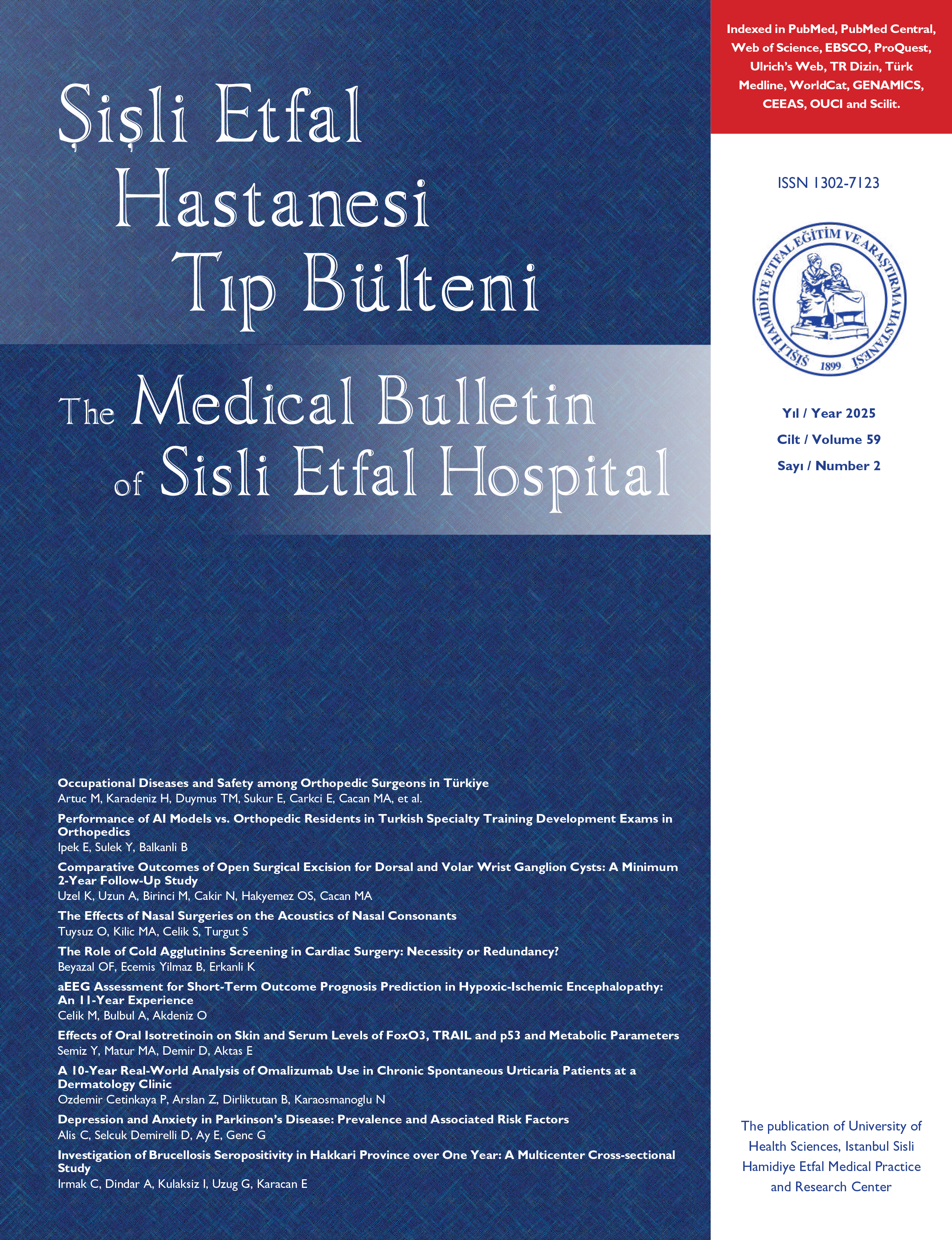
Tip II Diabetes Mellitusda Hepatit B ve C virüs İnfeksiyonu sıklığının Araştırılması
Yahya Öztürk, Taner Baştürk, Fatma Çalka, Murat Içen, Bülent Öztürk, Sema Karul, Yüksel AltuntaşŞişli Etfal Eğitim ve Araştırma Hastanesi, 2. Dahiliye Kliniği, IstanbulAMAÇ: Tip II DM ile Hepatit B ve Hepatit C sıklığı arasındaki ilişkiyi araştırmak.
MATERYAL VE METOD: 120 Tip II DM ve 60 kontrol grubu alındı.Her iki grupda Anti HBsAg, HBsAg, Anti HBc, And HCV markerlarına bakıldı.Diabetik hastalar: 1) HBs Ag, Anti-HBs, Anti HBc ve Anti HCV markerlarından herhangi birinin veya daha fazlasının pozitif olup olmamasına göre marker (+) ve (-), 2)HbsAgn ın bulunup bulunmaması göre HbsAg (+), (-) ve 3) Anti HCV varlığına (+),(-) olarak iiç ayrı şekilde gruplandırılarak traıısaminaz düzeyleri karşılaştırdık.
BULGULAR: Hasta ve kontrol grubunda sırasıyla HbsAg 8 kişide (%6,7), 3 kişide (%5), Anti HbsAb 38 kişide (%31,7), 22 kişide (%36,7) Anti HCV4 kişide ( %3,3 ), Ikişide (%1,7) tespit edildi. Aralarında istatistiksel bir fÜrk bulunmadı. Marker pozitif hasta grubunda traıısaminaz seviyesi sayısal ve ortalama yönlerinden anlamlı olarak yüksek bulundu.
SONUÇ: Diabetik hastalarda HBV ve HCV enfeksiyonunun non diabetiklerden daha sık olmadığı düşüncesine vardık. Ancak bu hastalar, daha çok tıbbi müdahaleye maruz kaldıkları için girişimler sırasında hijyenik kurallara azami dikkat edilmesi ve DM lıı hastalarda transaminazı yüksek olanların mutlaka hepatit B ve C yönünden incelenmesi gerektiğine inanıyoruz.
Hepatitis B and C Virus Infection Frequency in type II Diabetes Mellitus
Yahya Öztürk, Taner Baştürk, Fatma Çalka, Murat Içen, Bülent Öztürk, Sema Karul, Yüksel AltuntaşSecond Department of Internal Medicine, Şişli Etfal Training and Research Hospital, Istanbul, TurkeyOBJECTIVE: Assessing the relationship between type II Diabetes Mellitus and the frequency of Hepatitis B and C infections.
MATERIAL AND METHOD: Anti HBs, HBsAg, Anti HBc and Anti HCV markers were measured in 120 type II Diabetes Mellitus patients and 60 patients in the control group. The diabetic group was subdivided further depending on (I) any one or more of Anti HBs, HBsAg, Anti HBc and Anti HCV markers being positive or negative, (2) presence of HbsAg (HBs Ag positive or negative)and (3) presence of Anti HCV (Anti HCV positive or negative). The transaminase levels were compared between the groups.
RESULTS: The positive results in the patient and control groups were 8 (6.7%) and 3 (5%) for HBs Ag, 38 (31.7%) and 22 (36.7%) for HbsAb, 4 (3.3%) and 1 (1.7%) for AntiHCV, respectively. The results were not statistically significant. The transaminase levels were significantly higher in the marker positive group.
CONCLUSION: In diabetic patients, frequency of HBV and HCV infection was not higher than the non-diabetic group. But since these patients frequently require medical intervention, it is important to pay attention to the hygenic rules during the interventions and to screen for HBV and HCV infection in diabetic patients in case of transaminase level elevations.
Makale Dili: Türkçe



















